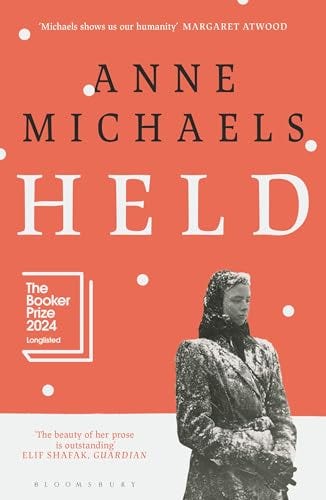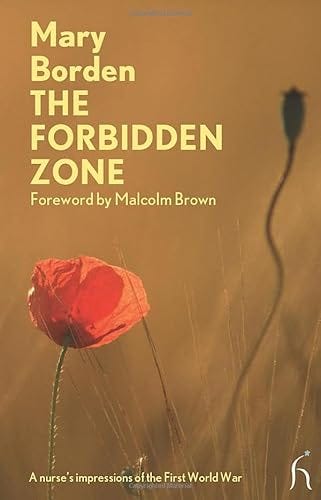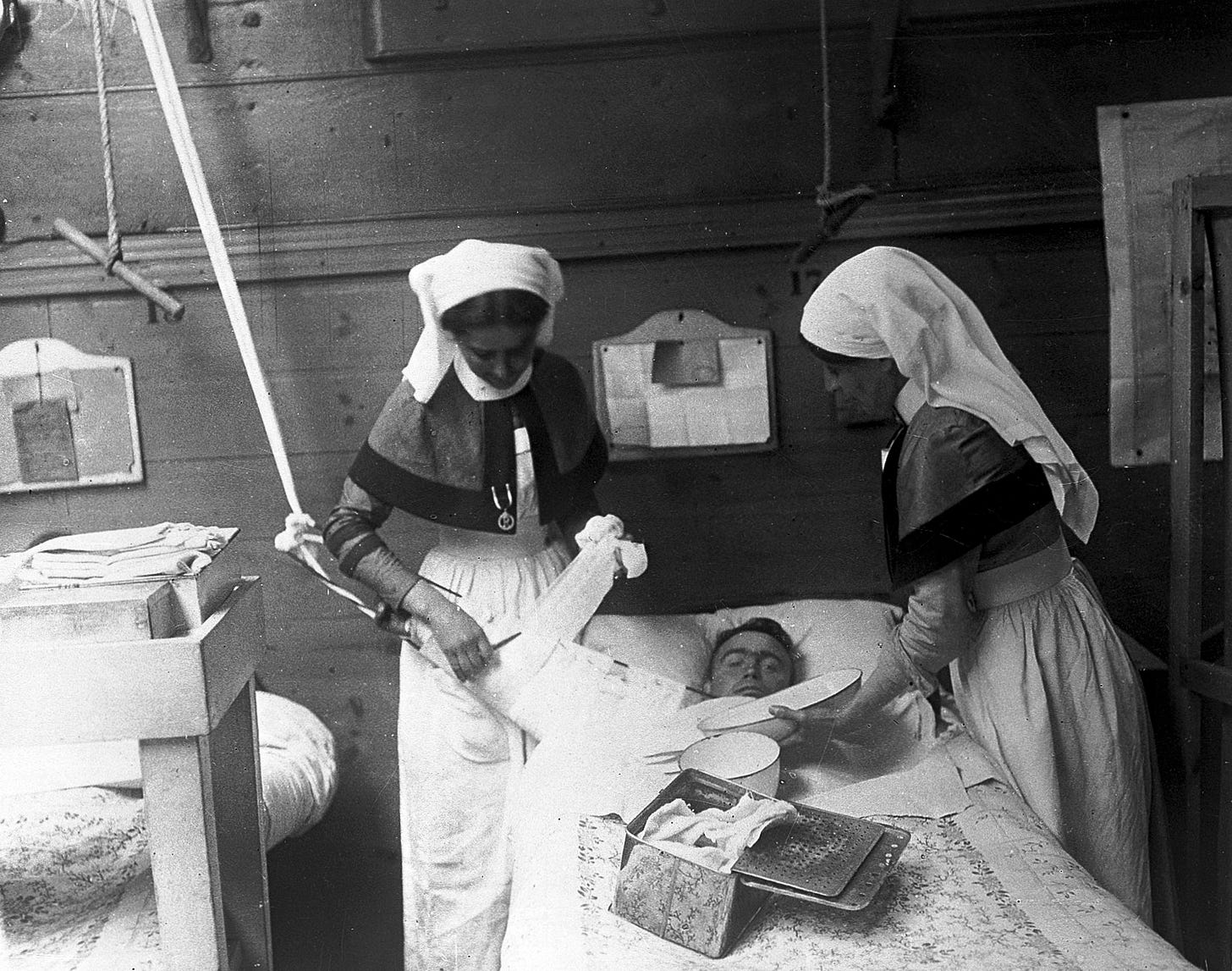Welcome to A Narrative of Their Own, where I discuss the work of 20th century women writers and their relevance to contemporary culture.
If you enjoy reading essays on literature as well as monthly reviews of great books and recommended reading, please consider a free or paid subscription.
In my recent January Review, I mentioned my reading of Held by Anne Michaels.
Pushed into my hands by a work colleague, it was not a book I had heard of, although I had come across Michaels’ Fugitive Pieces, for which she was widely acclaimed. Held isn’t a book I would necessarily have picked up, but I’m so glad I did; I found it breathtaking.
Held follows the stories of various (oftentimes connected) characters in a non-linear narrative which centres around the themes of war, displacement, love and hope. Interestingly, Michaels structures the chapters around various rivers and time periods. Opening with ‘River Escaut, Cambrai, France, 1917’ and weaving her way between 1920’s North Yorkshire, several pieces set in Suffolk between the years 1968, 1984, and 2010, and many others in between.
The first chapter opens from the narrative voice of John, a soldier in WWI, who is lying in a field beside the River Escaut. Whilst John cannot feel his legs, he realises alongside him is a fellow young soldier, Gillies. It becomes apparent through this first narrative that Gillies is in fact dead.
The narrative is told in a fragmented style, meaning we get short paragraphs - some as short as one line - breaking up slightly longer ones, as John remembers meeting his wife Helena and reflects on his current predicament.
“We know life is finite. Why should we believe death lasts forever?”
John then goes on to feature in a second chapter. Now we see him returned from the war, running his own photography studio and living above it with his wife Helena. He begins to see troubling images in the background of his photographs; the images of dead relatives. It is clear from this part of the story that John is struggling with PTSD and the shame of coming back from the war when other soldiers did not.
“John learned it was possible, even in the pitch-dark, to discern a man putting his head in his hands.”
Even in bed with his wife, where he hardly sleeps, he continually wakes and believes his sleeping wife to be the soldier Gillies, dead in the ditch beside him.
“It took him some time to realise that the noises that woke him were in his head.”
Throughout the book, we see how war rumbles through the generations. We witness Helena, now widowed, living as an older woman and working in a bookshop. We see John and Helena’s daughter Anna as an adult, working as a doctor; Anna’s husband and daughter Mara (who is also later a doctor). We even go further back and visit John’s mother as she contemplates becoming a mother.
There are also random encounters with other characters who seem more difficult to place, such as the couple living under communism, which really brings home the reality for a young family simply trying to live honest lives under a harsh regime.
A section I did find a little jarring was one on Marie Curie, which didn’t seem to fit, but I think it may have been relevant to the scientific nods Michaels’ gives throughout the book. As one critics suggests, “The Curies are peripheral to the main narrative, but science, hauntings, and the way love complicates the linearity of time are themes that recur insistently in this episodic novel.”
Michaels, who is also a poet, creates some vividly evocative imagery throughout the book.
“He smelled the shadows in the garden, like sweating horses in the dark, the wet dog in the grass. He heard the broken voice of the river.”
The book is also very much a four-generational, female-centred story of love, survival, and hope.
“She felt the loss - the lifetime of it - of every night without him, of their communication, body to body, even in sleep.”
Whilst I enjoyed Michaels’ thematic and structural choices in the book, I think some may find the style of fragmentation difficult, preferring a more linear approach to storytelling.
Fragmentation is an aesthetic style which uses fragments, sometimes also known as snapshots or vignettes, to make a whole story or intersecting stories, as in this book. It allows for individual chapters or vignettes to be read in isolation, as well as making up a greater part of a whole book. Such novels tend to lack a traditional plot or set of characters. They are often used to show a cultural crisis or time of flux. Perhaps for this reason, they were developed in some early twentieth century texts; a time of great cultural crises, as well as change and innovation, particularly in the sciences and modern warfare.
This is a literary style I have worked with quite extensively before as I wrote a whole dissertation on the use of this form of writing through the work of Mary Borden.
Borden, a Chicago-born heiress, set up and ran a military hospital at Le Zone Interdite - the forbidden zone - on the front line during WWI. She wrote about her experiences of nursing wounded and dying soldiers in her text The Forbidden Zone, but instead of writing a typical nursing memoir as others had done, she presented her writing in the form of fictionalised prose and poetry. Her writing was unusually visceral and open about the devastation on the battlefield. Due to this, she was unable to get it published until around a decade later, with publishers worried over the reaction of the public and the loss of morale towards the war effort.
What is interesting about Borden’s book is her use of a fragmentary prose rather than a linear exposition. What I argued in my dissertation was that Borden utilised this style, not simply to echo the modernist style of the time, but as a way to deal with her own civilian trauma of the war. I wrote more about this topic in this essay, but essentially, I showed that Borden’s text often indicates the hallucinatory visions of a woman devastated by the trauma she is facing and an almost unhinged narrative of the breaking down of men’s bodies, in an original use of the female gaze.
When I came to Michaels’ book a couple of weeks ago, I immediately saw the connection with Borden’s own, and wondered if Michaels also utilised this framing structure of the prose in order to show the broken, fragmented images of the pointlessness of war and the displacement of people that result from this.
There were also other similarities. In the second chapter showing John returned from the battlefield, wounded and with a prosthesis, the narrative voice shows that stumps or false limbs were seen as an almost shameful impediment to the returned soldier. During his photography sessions, John often covers over the missing limbs of soldiers, as they pose for a family portrait, wishing to save them the embarrassment of this being captured by his camera. It hints at the idea that the missing limbs indicate a reduction in manliness from the men; that their status as returning war hero is somehow diminished by this lack.
“He wanted to ask, if only it did not seem so self-pitying, how many parts can be taken from us before we are no longer ourselves.”
John also makes several references throughout the narrative to still being ‘intact’; indicating that if he can still think and use big words or have his own thoughts, then this means he is mentally and physically able.
Similarly, Borden shows within her text how it was unseemly to refer to a man’s stump or missing leg, and that in the world of the war hospital, men’s mangled limbs resulted in them being seen as no longer men at all.
“I had watched this out of the corner of my eye, busy with something that was not very like a man.”
Like Michaels, Borden takes the small intimacies of war as it relates to the people: herself as a war nurse; the many soldiers in her care; the wives and girlfriends waiting for them back home, and then struggling with their returned men, who are no longer the same as they were.
“There are no men here, so why should I be a woman? There are heads and knees and mangled testicles…There are these things, but no men, so how could I be a woman here and not die of it?”
She also often suggests at the barbarous nature of patching up young men, only to send them back to a futile war they were ill-equipped to survive. Again, this theme is echoed in Held, in a section featuring the young Mara as she works in war-torn countries, saving the lives of women and children who are then sent back into the fray, only to be killed hours or days later.
Michaels’ similarly hallucinatory prose utilises the backdrop of great crisis and change to illuminate the realities of life for the ‘ordinary’; the great historical moments are told, not in the larger scope of history books, but in the words and thoughts and feelings of the people who live through them. In Michaels’ own words “we are born to face a single moment”.
Borden also interestingly shows the relevance of PTSD on civilians, not just the returning soldiers. Many of her nursing stories show that the nurse’s psyche is unravelling in a similar way to the male soldiers, told through a foggy, dream-like prose.
Similarly, Michaels illuminates the thoughts and anxieties of those that are left behind: one of the strongest narratives in the book is told from the perspective of Mara’s partner Alan, a war photographer, and father Peter, a local hat maker, as they mourn Mara’s return to a war-zone.
“He should have raised her to selfishness.”
I am worried that by writing this review, you may be thinking this is going to be a depressing book and why bother when the world is so difficult to navigate as it is. I hear you, and this is partly why I also would not necessarily have picked up this novel.
But although war, destruction, and tyranny are abundant within this text, it is strongly a story of hope and survival. As Paavo, living under communism remarks: “with every tightening of the screw, the tyrant makes our hope more precise. And nothing enrages a tyrant more than hope.”
It is also a story of love and the powerful bonds that move up through the generations. Of the strength of women and their roles within families and wartime structures, and of how they have been and remain instrumental in the larger stories of history.
If you’re new around here, I usually write about all things women literature related. My paid subscribers also receive a monthly review of great books and recommended reading. Please consider a free or paid subscription - your support helps keep this newsletter afloat!
Not into commitment? Why not contribute to my book fund instead?







This was really interesting. I really liked Held by Anne Michaels but now you've led me to The Forbidden Zone by Mary Borden.
I enjoyed the fragmentary aspect of Held which I know a lot of people found annoying but it was like beautiful drops of consciousness that you were left to decide about yourself.
This is such a fascinating, well-written essay about love, war, trauma and narrative. I love the connections you’ve made between the authors - and it’s great to see how your MA impacts how you read new books. Thank you for sharing :)